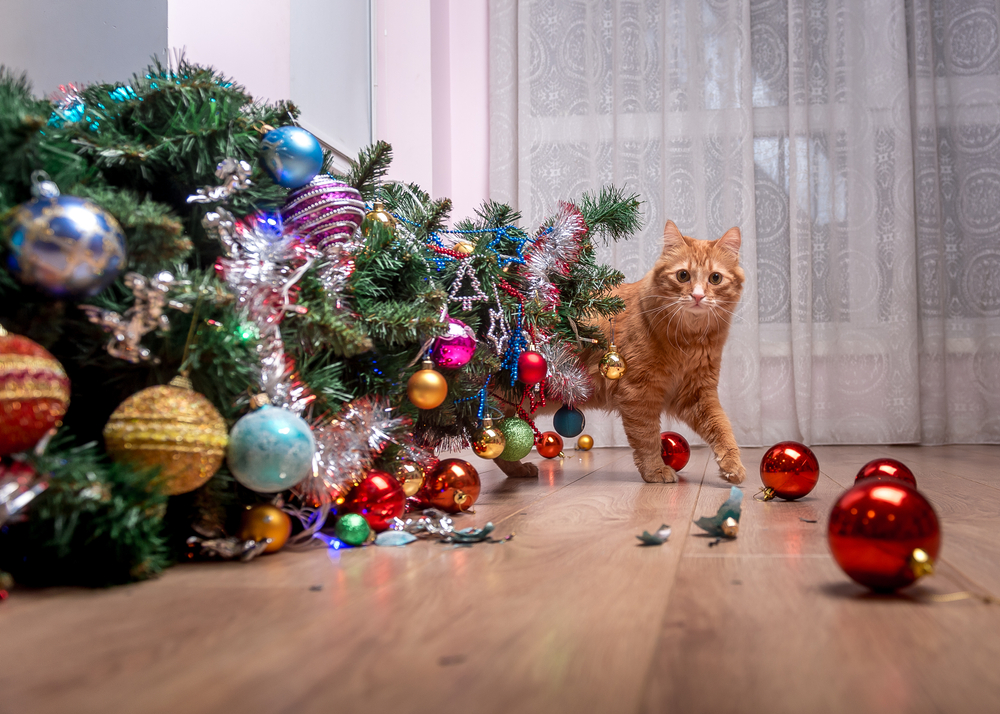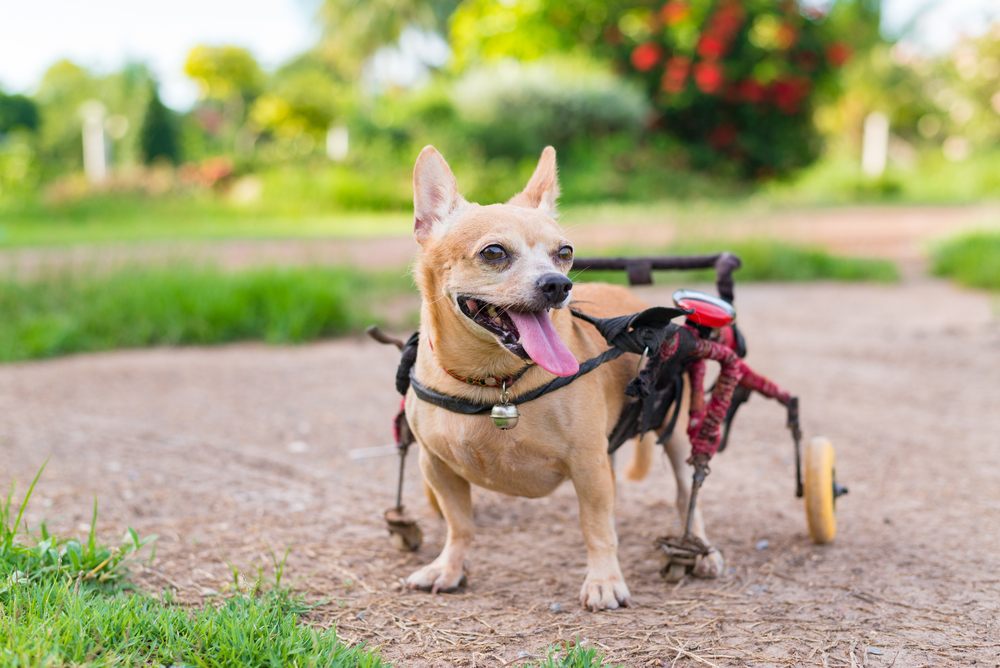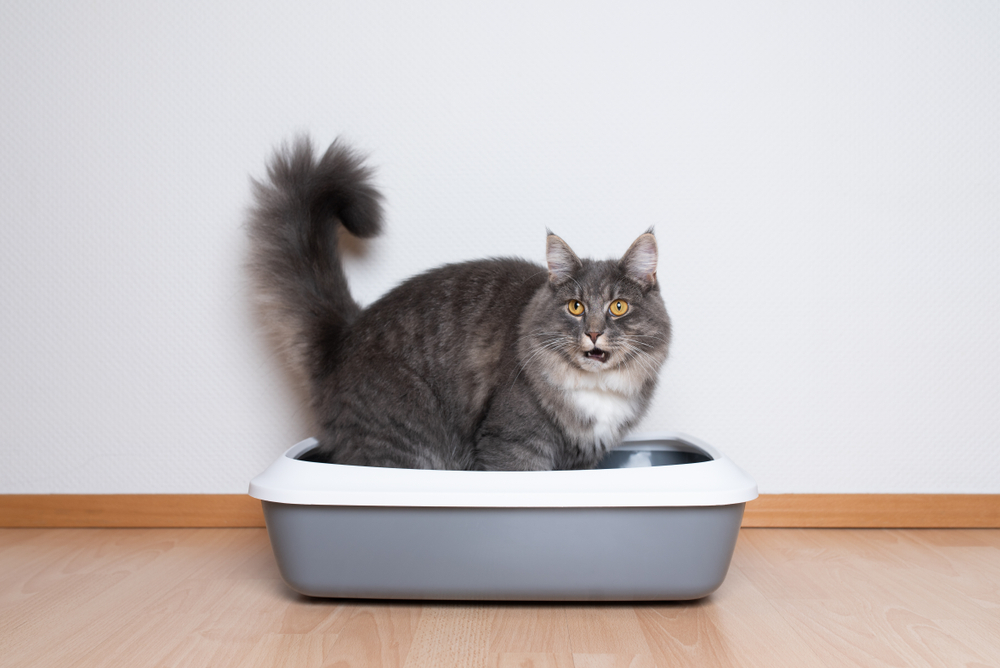July 5 is the busiest day of the year for pet shelters, because they take in large numbers of pets frightened by the fireworks. Approximately 67% of dogs and many cats in the United States suffer from noise aversion. The American Animal Hospital Association (AAHA)-accredited team at Cherry Knolls Veterinary Clinic want to help with the following information about noise aversion and steps you can take to mitigate your pet’s fear.
Noise-averse pets
Pets who suffer from noise aversion respond to sounds in their environment with extreme fear and anxiety. Pets can develop an aversion to any noise, but the most common culprits include fireworks, thunder, sirens, garbage trucks, doorbells, and vacuum cleaners. While any pet can be affected, pointers and herding dog breeds seem at a higher risk. Other predisposing factors include:
- Pets not properly socialized — Socialization is important for puppies and kittens, to learn to react to their environment in a healthy way, without experiencing fear or showing aggression. Socialization ideally occurs during the first few months of your pet’s life and involves introducing them to as many new sights, sounds, smells, textures, and experiences as possible. Inadequately socialized pets are at higher risk for becoming noise-averse, since they never learn that unusual sounds aren’t dangerous.
- Pets with musculoskeletal pain — A 2018 study that linked noise aversion to musculoskeletal pain found that a loud noise can startle a pet and make them tense, putting extra stress on painful muscles or joints, and causing a negative association. If your pet has a noise aversion, bring them to Cherry Knolls Veterinary Clinic, so we can determine if pain is contributing to their problem.
- Pets who have a negative experience — If a noise occurs while a pet is experiencing stress or pain, they may associate the sound negatively.
- Pets in a household with a noise-averse pet — Pets can learn to fear noises if other household pets exhibit a fear response when the sound occurs.
Noise aversion signs in pets
Noise-averse pets can exhibit signs ranging from subtle to extreme. These signs include:
- Hiding — Noise-averse cats are especially prone to hiding, and you may not realize they are terrified. Note whether your pet disappears during events such as fireworks and thunderstorms.
- Seeking attention — Some noise-averse pets become extra needy, and seek their owner’s attention and comfort.
- Behaving inappropriately — Some extremely fearful pets may urinate or defecate inappropriately, and chew or scratch at doors, trying to escape.
- Exhibiting fear — In some cases, the fear signs, which can include shaking, trembling, panting, and vocalizing excessively, are obvious.
Managing noise-averse pets
Many strategies can mitigate your pet’s fear, but you may have to try several approaches to find what works for them best. Never punish or scold your pet for exhibiting noise-averse behaviors, because this may escalate their fear, and they may associate the noise with punishment. In addition, don’t try to force the situation and make them endure the noise event, which will not desensitize them to the sound, and could increase their distress. They also could try to escape and injure themselves—or you. Instead, use these helpful strategies:

- Ensure your pet has a safe place — Create a safe place in your home (i.e., a crate, closet, or small room where they feel secure), where your pet can escape when they are afraid or anxious. Make the area as comfortable as possible by providing a soft resting place, toys, and treats. A piece of your recently worn clothing in their safe place can also provide comfort.
- Provide distractions — Distract your pet with games or a food puzzle toy to keep their mind off the noise.
- Suppress the noise — Leave white noise or music playing to help suppress the upsetting sound.
- Use calming pet products — Many products, including earmuffs to muffle the noise, close-fitting vests, and pheromones, may help some noise-averse pets stay calm.
- Perform behavior modification — Behavior modification can help some pets, but these techniques take time to be effective. Take these steps:
- Find a recording of the noise that upsets your pet and ensure they respond to the recorded sound.
- Play the recording quietly, so your pet doesn’t react to the noise.
- Feed them, or play their favorite game while the recording is playing.
- Gradually increase the recording’s volume over several sessions. You may need to practice daily for weeks or months.
- If your pet exhibits fear at any point, immediately lower the volume until they don’t react, and start the next session at the lower volume.
- Be patient, and offer frequent praise and treats when they remain calm.
Providing drug therapy — Noise aversion can be so severe in some pets that drug therapy is the only effective way to manage their problem. Many medications are available, and our team at Cherry Knolls Veterinary Clinic will work with you to determine the best medications for your pet. These medications are best administered before the disturbing event, and finding the right drug and dose may take several trial runs.
Ensure your local pet shelter isn’t housing your pet on July 5 by taking steps now to address their noise aversion. If you need help managing your pet’s noise phobia, contact our Fear Free team at Cherry Knolls Veterinary Clinic, so we can determine the best strategy to address their fear.








Leave A Comment